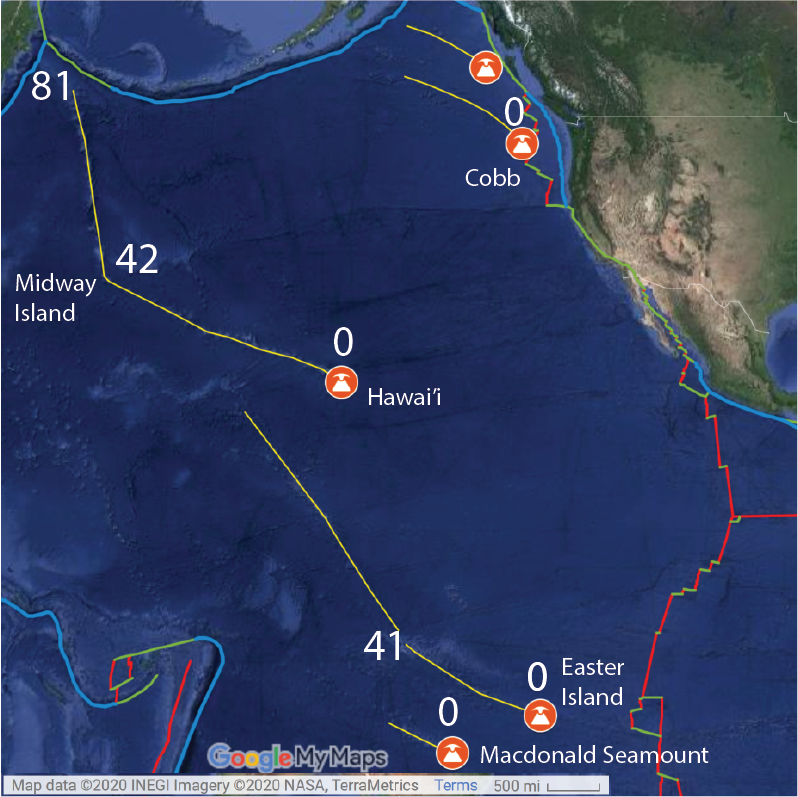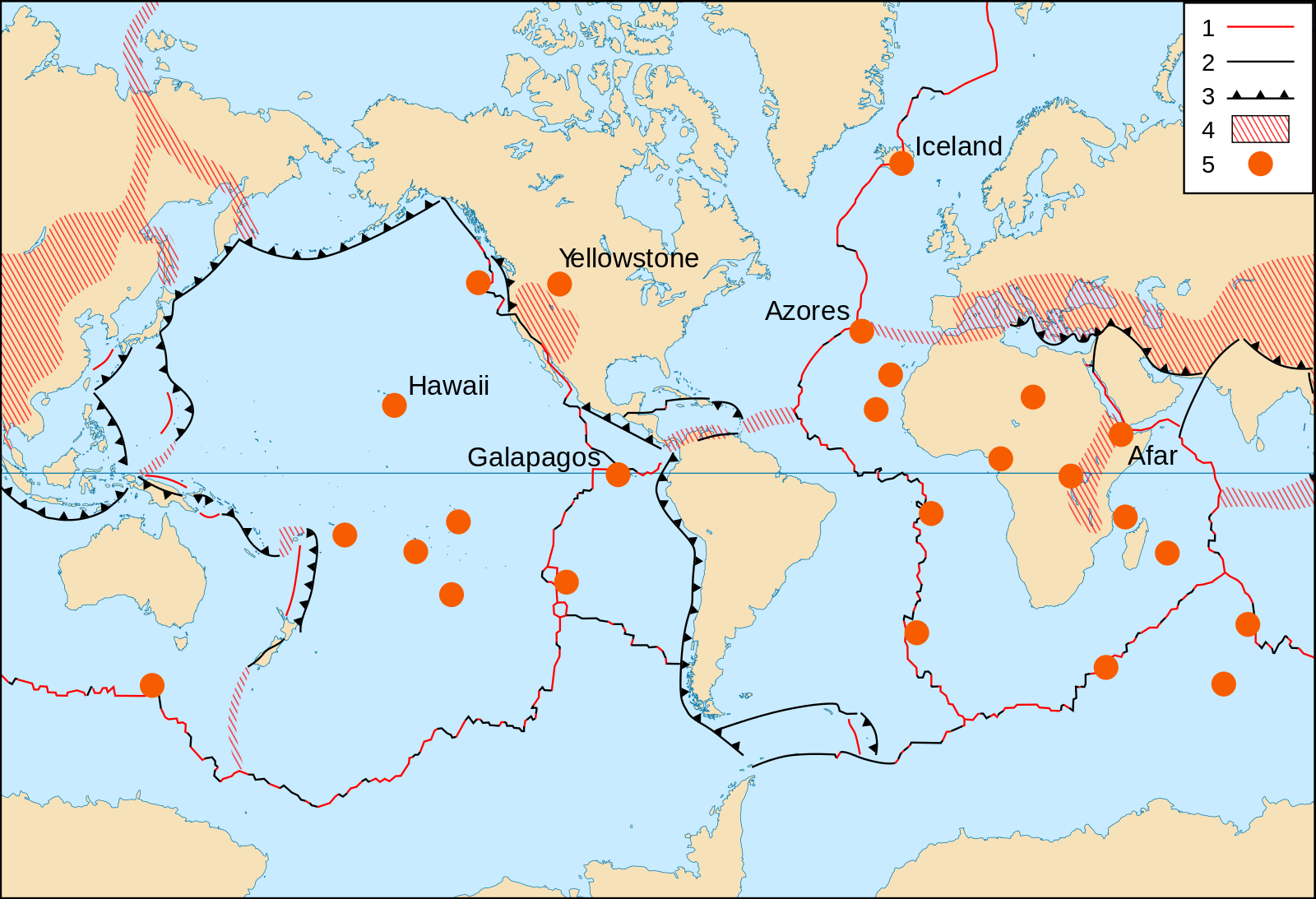
Plate Tectonics |
||
Triple junctions are places where 3 plate boundaries coincide. Multiple boundary combinations can occur, and migrate and change across time.
Watch this video, "What is a Volcanic Hotspot?" by IRIS Earthquake Science. As you do, note the following:
Hot spots are caused by rising plumes of mantle material. Volcanoes can form over them (Hawaiian Island chain). Most mantle plumes are long-lived structures and at least some originate at great depth, perhaps at the mantle-core boundary. This super-heated area rises up through the mantle to rest just underneath the lithosphere. The hot spot heats up the crust, which fractures, allowing magma to rise to the surface. At first, the magma comes out in huge quantities and floods the surface - hence their name: Flood basalts. After millions of years the activity calms down and a volcano will form. During this time the plate is moving, but the hot spot remains stationary. The plate with the volcano moves off the hot spot and goes extinct, and a new volcano forms. This process of creating a new volcano, the volcano moving off the hot spot, and a new volcano forming will continue until the hot spot ceases to exist. A chain of volcanoes like the Hawaiian Islands will form.

Composite image from: 1) image: "Google Maps Satelite Imagery" Google Earth is in the Public Domain ,
2) annotations by Sonjia Leyva © 2020.
The numbers on the image above indicate the ages of rocks in those locations. For example, 0 millions of years old would be rocks that have just formed, while 41 represents rocks that formed 41 million years ago. Those numbers represent where the plate was when those rocks formed.
Note how the ages of the rocks at the islands of Hawaii and Easter, and the Cobb & McDonald seamounts are all 0 millions of years old. That is where the plate is directly over the hotspot and active volcanism is occurring. Now, follow the yellow lines slightly to the left to where the "elbow" bend is located. The age for the rocks here is around 41-42 million years old. The yellow line, or "track" of the hotspot, changes, and heads nearly due north at this elbow bend. All of the rocks at the end of each track are around 81 million years old and are about to be subducted into the Aleutian Trench (blue line)
What does this tell us? Well, for one, that the Pacific Plate has moved over the past 81 million years, producing a series of volcanoes (seamounts if underwater, islands if above) as it moved over each of the four hot spots. Second, we can see that plate motion can change direction. What causes this change to happen? It can be due to a number of reasons, including an increase in subduction in one area, or subduction can stop, or seafloor spreading can increase . . . there can be lots of reasons!

Image source: "Fig31" by USGS is in the >Public Domain
copyright Sonjia Leyva 2022 |
|